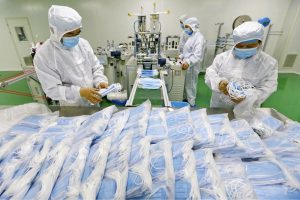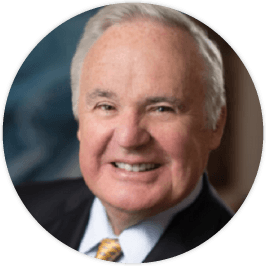Procuring personal protective equipment (PPE) has been an urgent priority since day one of the Coronavirus (also known as COVID-19) pandemic. Unfortunately, since the start of the global health crisis, the supply chain to get the PPE into the hands of medical professionals has been wrought with roadblocks.
The current supply chain has been proven to not have the strength and flexibility to handle a demand shock of this magnitude. This market failure must be rapidly reconfigured to meet unprecedented demand for PPE. The only question that remains now is “What would be possible if these supply chain hiccups for PPE were not commonplace?” Let’s take a look:
PPE Supply Chain Problems Abound
As of late April, Washington state (one of the first major states where COVID-19 had originated) had received almost 17 million items of PPE. Although this was a monumental delivery at the time, the state was still waiting on orders of more than 287 million items of PPE to arrive.
To make matters worse, states have been competing against the federal government for the same small stream of supplies, while countries are competing against each other for them too. Even after a shipment seems secured, it could still be redirected; News organizations are reporting that the U.S. Federal Emergency Management Agency (FEMA) is confiscating orders and redirecting them to the national stockpile at the last minute.
Direct Sourcing of PPE Orders
The redirection of PPE orders has been said to notably come from existing major distributors rather than smaller production companies who are set up to move quicker than large distributors to solve the PPE crisis. With the traditional supply chain unable to fill the gap between production and consumption, many hospitals have had to source personal protective equipment, or PPE, directly. Direct sourcing is a new approach to most hospitals because they have historically relied on distributors and group purchasing organizations to manage many aspects of the sourcing process.
Hospital administrators are also finding that they lack the purchasing power, capital, and logistical access to keep up with rapidly rising demand in a manner that meets minimum safety requirements. This can be another driving factor as to why many hospitals are shifting more towards smaller distributors that are focused on high quality, fast turnaround times and smaller quantities.
How Can the U.S. Overcome PPE Supply Chain Problems?
Prior to the effects of COVID-19 being felt nationwide in the U.S., regional manufacturers were making fewer masks, gowns and gloves domestically because it was more cost-effective to rely on importing PPE from other countries. During normal times, this type of manufacturing disparity would be a near non-issue. But since the COVID-19 outbreak began in Wuhan and China manufactures roughly 50% of masks and respirators around the world, the U.S. needed PPE to be developed at home and quickly.
The fact remains that the global shipping system becomes more overwhelmed by the day. As more U.S. citizens are being driven indoors by state-wide stay at home orders, it has created a bottleneck on the domestic supply chain that has affected how quickly orders for PPE can be produced and shipped. Now that talks of the U.S.-China trade war have started to heat up again, it wouldn’t be too farfetched to think that hospitals will be sourcing a majority of PPE from domestic sources for the foreseeable future.
If domestic sourcing of PPE is the only route in the future of U.S. states, then it would be wise to leverage our country’s connections with neighboring states such as Mexico and Canada to secure the necessary supplies in the event that domestic production and restocking of PPE do not solve the crisis quickly enough. Another avenue that would help the U.S. overcome supply chain problems would be for the federal government to secure commitments from major banks to provide upfront payment for any government purchase order, regardless of which vendors the payments are going to. Above and beyond this, regulators could also loosen restrictions on regulations for PPE shipments to streamline the payment and shipment processes.


















